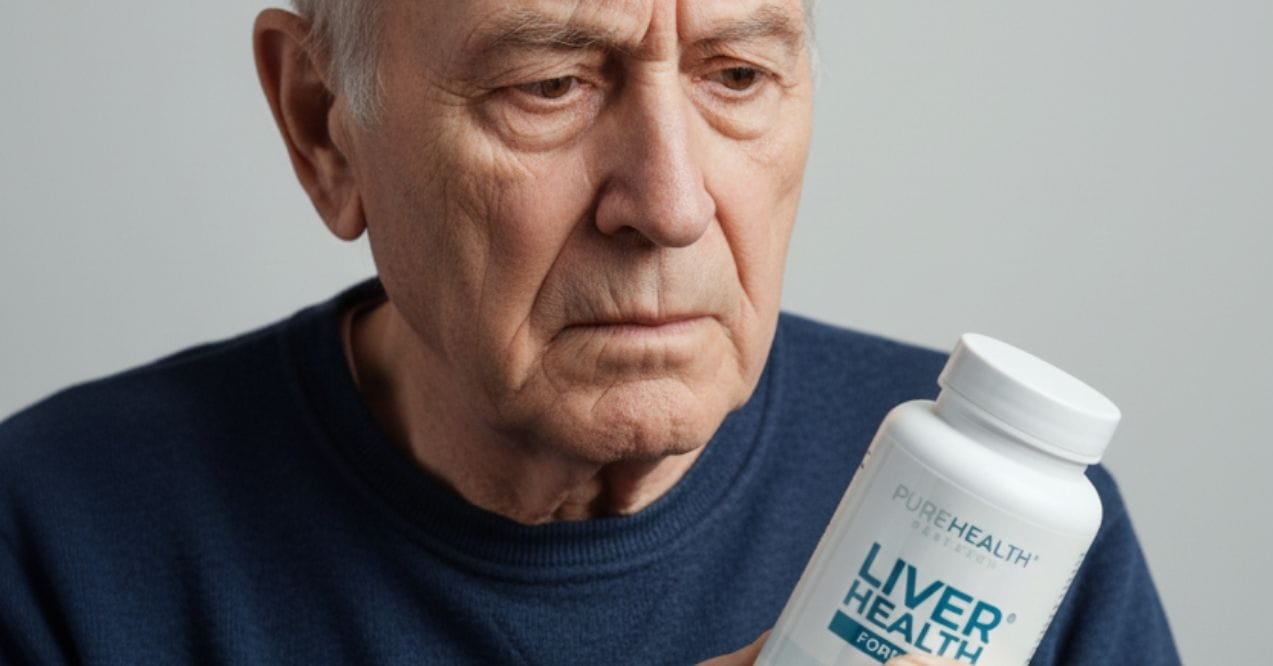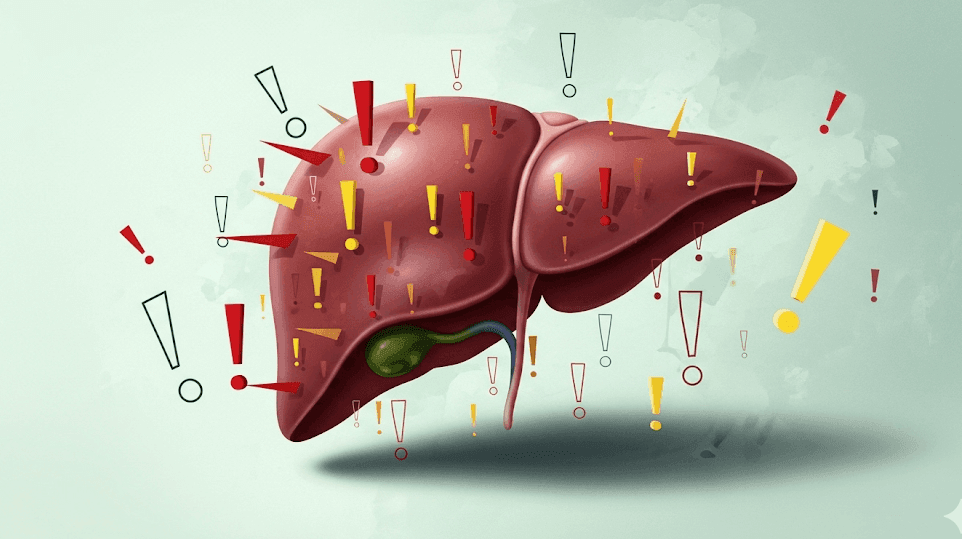8 Signs You Have Liver Problems After Gallbladder Removal
Learn about liver problems after gallbladder removal, common symptoms, and tips to maintain liver health post-surgery.


When you have your gallbladder removed, some people can develop liver problems. This is because the liver plays a crucial role in processing nutrients, removing toxins, and producing bile, a substance that helps the body break down fats. The gallbladder’s job is to store and concentrate this bile, releasing it into the small intestine when needed.
Once the gallbladder is gone, the liver has to adjust. This can lead to complications. This post will help you spot the signs of liver issues after gallbladder removal. Knowing what to look for is the first step in figuring out how to make your liver healthy again.
Liver Functions
Your liver is a multitasking marvel. Here’s what is the function of your liver:
- Processes Nutrients – Converts food into energy and essential compounds.
- Detoxifies – Filters toxins from your blood.
- Produces Bile – Aids in fat digestion.
- Supports Immunity – Helps fight infections.
- Regulates Blood Clotting – Crucial for healing.
- Stores Vitamins and Minerals – Keeps them for when you need them.
Maintaining and improving liver function is vital for your overall well-being, especially as you age.
Gallbladder Functions
Your gallbladder works closely with your liver. Its main jobs are:
- Stores Bile – Concentrates this liver-produced fluid.
- Releases Bile – Helps digest fats in your small intestine.
- Aids Nutrient Absorption – Especially for fats and fat-soluble vitamins.
Sometimes, the gallbladder can develop issues like gallstones or inflammation. These problems may lead to pain and digestive issues, occasionally requiring gallbladder removal.
If your gallbladder is removed, your body can still function, but you might need to adjust your diet to help with fat digestion.
Understanding these organs’ roles can help you make informed decisions about your health. If you have concerns, always consult your healthcare provider.
Signs You Have Liver Problems After Gallbladder Removal
Liver problems after gallbladder removal can arise due to the liver’s increased responsibility in managing bile production and fat digestion without the aid of the gallbladder. While the body can adapt, some individuals may experience symptoms indicating that their liver is struggling to keep up with these changes. Here are some common signs that may suggest liver issues after gallbladder removal:
1. Fatigue and Weakness

Fatigue and weakness are often among the first signs of compromised liver function. When the liver is overburdened, its ability to metabolize nutrients and detoxify the body is reduced, leading to lower energy levels. This decrease in energy can make even routine tasks feel exhausting, leaving you feeling constantly tired and physically weak.
2. Nausea and Vomiting

Nausea and vomiting can occur when the liver struggles to process toxins and fats effectively. Without the gallbladder to regulate bile release, the liver may have difficulty managing the increased bile flow, leading to digestive discomfort. This can result in feelings of nausea, particularly after consuming fatty foods, and in more severe cases, vomiting may occur as the body attempts to rid itself of the unprocessed substances.
3. Abdominal Pain

Experiencing stabbing pain after gallbladder removal could be a sign of liver-related issues. This pain may manifest as a dull ache or a sharp, stabbing sensation in the upper right side of the abdomen, where the liver is located. The discomfort can also radiate to the back or shoulder blades, making it difficult to pinpoint the exact source. Such pain often indicates that the liver is struggling to handle the increased workload after gallbladder removal.
4. Loss of Appetite

Liver distress can have a direct impact on digestion, leading to a noticeable loss of appetite. When the liver is not functioning optimally, the digestion of fats and nutrients becomes less efficient, making food less appealing. This reduction in appetite can contribute to unintended weight loss and nutritional deficiencies over time, further exacerbating liver-related problems.
5. Itching

Persistent itching can be an unusual but telling sign of liver dysfunction. This symptom occurs when bile salts build up in the bloodstream due to the liver’s impaired ability to process and excrete bile efficiently. As these bile salts accumulate, they can cause an intense, widespread itching sensation that is often unrelieved by topical treatments. This itching is a direct result of the liver’s struggle to manage bile flow after gallbladder removal, signaling that the liver may be under stress.
6. Weight Loss

Unintentional weight loss can be a symptom of advanced liver problems. After gallbladder surgery, the liver might struggle to digest fats properly, leading to bloating after gallbladder surgery and a reduced ability to absorb nutrients from food. This impaired digestion can cause a decrease in appetite and lead to unintended weight loss. Additionally, as the liver’s function declines, the body may start to break down muscle and fat reserves for energy, further contributing to weight loss.
7. Jaundice

Jaundice, characterized by yellowing of the skin and eyes, is a clear sign of liver issues. Jaundice after gallbladder removal occurs when the liver cannot efficiently process bilirubin, a byproduct of red blood cell breakdown. When bilirubin builds up in the bloodstream, it causes the skin and eyes to take on a yellow hue. This is often one of the most noticeable signs of liver dysfunction and indicates that the liver is significantly compromised.
8. Heartburn

Heartburn after gallbladder removal can occur due to changes in bile flow and its impact on the stomach and esophagus. Without the gallbladder to regulate bile release, bile may flow back into the stomach and esophagus, irritating the lining and leading to heartburn. This discomfort is often more frequent and severe after the surgery, as the digestive system adjusts to the new bile flow dynamics.
How to Fight Liver Problems?
As we journey through life, our liver works tirelessly to keep us healthy. But sometimes, it needs a little care, especially after 50. Let’s explore some smart ways to support this vital organ:
- Adopt a liver-friendly diet rich in fruits, vegetables, and whole grains to support liver function and help manage symptoms after gallbladder removal.
- Consider following short-term, gentle cleanses, such as a 3-day liver cleanse diet, which can help kickstart your liver’s detoxification process by focusing on nutrient-rich foods like leafy greens and lemon water.
- Stay hydrated by drinking plenty of water, which is essential for flushing out toxins and supporting the liver’s detoxification efforts.
- Engage in regular exercise, as it promotes circulation and overall liver health, while also helping to maintain a healthy weight.
- Monitor your body for signs of liver detox working, such as improved digestion, clearer skin, and increased energy levels, to gauge the effectiveness of your liver care routine.
- Limit alcohol and avoid exposure to harmful chemicals to reduce the liver’s detoxification burden and promote better liver function.
- If you experience persistent symptoms or are unsure about your liver health, consult healthcare professionals to ensure proper management and care.
Additionally, consider adding supplements for liver health such as Liver Health Formula from PureHealth Research to your routine for extra support. Endorsed by Dr. Holly Lucille ND, RN, this formula is packed with scientifically-backed ingredients like Milk Thistle, Turmeric root, and L-Cysteine, known for their liver-enhancing properties. Milk Thistle supports liver function and protects against damage, while Turmeric root offers powerful anti-inflammatory effects. L-Cysteine strengthens antioxidant defenses and promotes cellular repair in the liver.

By incorporating Liver Health Formula into your daily regimen, you can give your liver the additional support it needs, especially after gallbladder removal.
Conclusion
Liver problems after gallbladder removal can arise due to the liver’s increased responsibility in managing bile production and fat digestion. Recognizing the signs of liver distress, such as fatigue, nausea, abdominal pain, and jaundice, is crucial for early intervention. If you experience pain in abdomen when coughing, this may warrant additional attention as it could indicate post-surgical complications.
By adopting a liver-friendly diet, staying hydrated, exercising regularly, and monitoring for signs of liver detox working, you can help support your liver’s function post-surgery. If symptoms persist, consulting a healthcare professional is essential to ensure proper management and maintain overall health.
After gallbladder removal, consider taking fat-soluble vitamins like A, D, E, and K, as their absorption may be reduced. Additionally, omega-3 fatty acids and a bile salt supplement can support digestion and overall nutrient absorption.
Gallbladder removal can affect liver function by altering bile flow, requiring the liver to manage bile production and fat digestion directly. This change may lead to potential liver issues, especially if the liver struggles to adapt post-surgery.
To keep the liver healthy without a gallbladder, follow a balanced diet rich in fiber and lean proteins, stay hydrated, exercise regularly, limit alcohol, avoid toxins, and monitor for signs of liver distress. Regular check-ups are essential.
Sign up for our Healthy Living newsletter!
Advertisement. This site offers health, wellness, fitness and nutritional information and is designed for educational purposes only. You should not rely on this information as a substitute for, nor does it replace, professional medical advice, diagnosis, or treatment. If you have any concerns or questions about your health, you should always consult with a physician or other health-care professional. Do not disregard, avoid or delay obtaining medical or health related advice from your health-care professional because of something you may have read on this site. The use of any information provided on this site is solely at your own risk.











